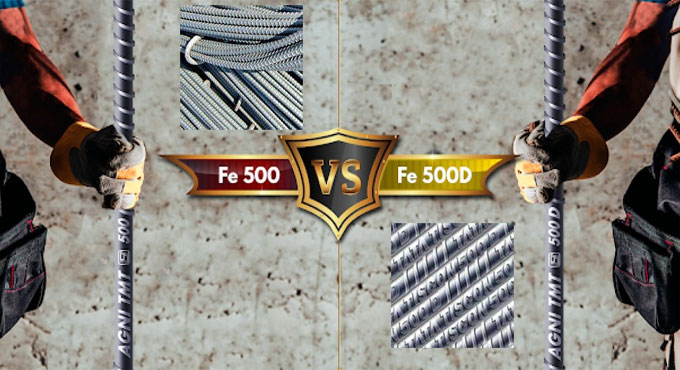
Details about fe500 and fe500d TMT bars
TMT bars are considered as the most vital elements of every civil construction. They are used into foundation to carry the load of the building, slabs, beams, columns as well as the live load of the people and their belongings.
The TMT bars should be arranged properly to resist the loads along with windstorms and earthquake. Inferior quality materials like cheap steel bars normally include high levels of unfamiliar materials which can damage the construction. It signifies that the steel bars do not contain desired chemical and physical properties. TMT steel bars are built up with unique metallurgical process called ?Thermo Mechanical Treatment?.
These TMT bars are authorized to use by The Bureau of Indian Standards for building and construction projects . The Fe 500 and Fe 500D are mostly recognized TMT steel bars in the market.
Chemical Composition Of TMT BARS: In Fe 500 & Fe 500D the term ?Fe? stands for Iron and ?500? stands for the least yield stress in N/mm2 and the letter ?D? signifies that such bars contain greater values of ductility (Superior UTS/YS & % Elongation).
These bars contain lower proportions of sulphur and phosphorus which are injurious for steels employed in construction.
Greater extent of sulphur causes ?Hot Shortness? where the melting point of steel is decreased, resulting in failure under severe high temperature conditions. Greater extent of phosphorus causes ?Cold Shortness? where the steel turns to be brittle under severely cold conditions and produces to cracking. Besides, the value of Carbon percentage in these bars is low to enhance the ductility and weldability of steel.
These steel bars are constructed under stringently controlled manufacturing process to transform them easily stretchable. It is known that the concrete contains superior compressive strength but considerably low tensile strength and ductility. So, if it fuses with TMT steel bars; it produces a highly ductile and tensile combination.
The Fe500D TMT bars provide a superior ductile strength as compared to the Fe500 TMT bars. The tensile strength of steel stays identical for both these products. Ductility means the capacity of the material, to deform plastically and accommodate when getting stressed with a tensile load.
When a piece of ductile material is pulled, prior to break, it will deform, alter its shape to accommodate with the stress. In this way, it consumes the energy.
The opposite of ductility is brittleness. A brittle material immerses, throughout stress, with very little energy and generally not even plastic.
It brings strength to the Fe500D TMT bars to engross abrupt loads that make them suitable for different natural disasters like earthquakes, tsunamis and cyclones. As there are extreme safety features in Fe500D TMT bars, they become them perfect for zones with high seismic activity.
To satisfy the stringent phosphorous and sulphur requirement of Fe500D grade of TMT bars , after melting the sponge Iron and hot metal from blast furnace, a special and licensed ERF-ELdFOSTM metallurgical method is utilized to dephosphorize the steel in the ladle and desulphurize the steel in Electrotherm Ladle Refining Furnace and now steel thus produced at ET is at par with Primary steel producers.

Image Source: agnisteels.com

